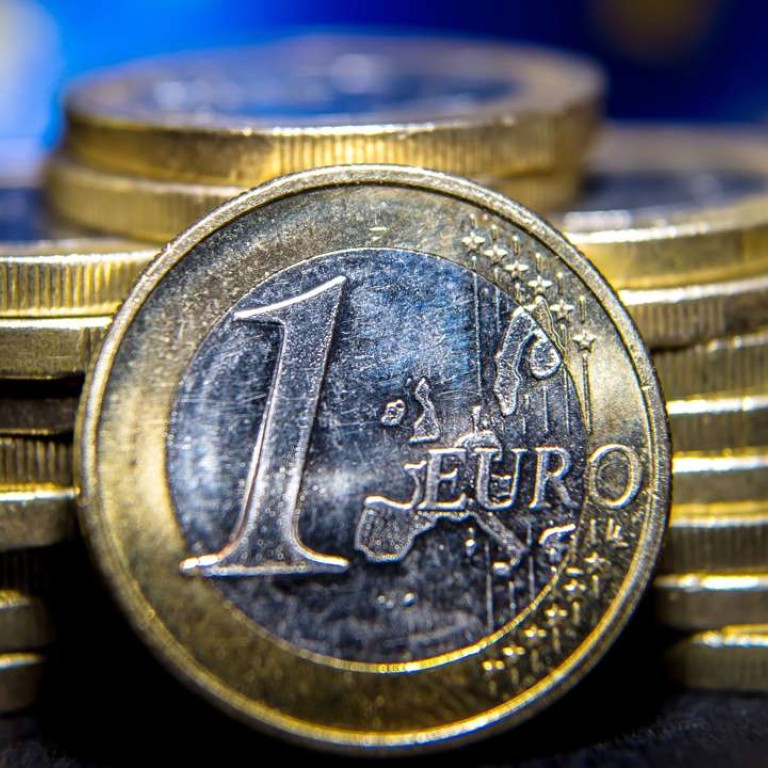
Euro set to meet its nemesis in 2017 as ECB’s cheap money runs dry
Fears about asset bubbles forming will only harden Germany’s resolve to stop monetary overkill as soon as possible
One of the burning questions that will vex global investors in 2017 is whether the euro will still be in existence by the end of the year. That may seem a bit of a shocker to comprehend, as the euro enjoys a little year-end short squeeze – but without a doubt the single currency looks set to have an extremely rough ride this year.
A dangerous cocktail of negative factors will prove its undoing this year, its 16th in existence after it was introduced to world financial markets as an accounting currency on January 1, 1999.
But weak economics, dodgy money, bad budgets and ugly politics will all have it in for the euro. Eurozone policymakers will be pushed to the limit to stop the currency going over the edge of a precipice.
It is no surprise European public opinion is splintering and euro scepticism and political populism are on the rise
Despite its year-end flurry, the euro remains perilously poised above parity against the US dollar. A plunge below EURUSD 1.0 should be on the cards early in the New Year.
And it’s not just the dollar on a rampage, but the realisation among global investors that the single currency has been skating on thin ice for far too long and the cracks are starting to spread.
Weak economics remain at the root of the currency’s vulnerability. Germany may be showing some brighter glimmers of life going into 2017, but, outside, most of the euro zone is a zombie economy, kept alive by a surfeit of cheap and easy money from the European Central Bank’s super-stimulus programme. But that’s not going to last forever.
There is no plan to cut back the ECB’s asset-purchase programme just yet, but clearly there are already discussions going on in Frankfurt backrooms to kill QE at some stage.
Germany is at the front of the queue calling time on the ECB’s unprecedented monetisation and the clamour for policy normalisation will intensify, not least because euro zone inflation is staging a comeback.
The ECB’s favoured inflation indicator, the 5-year break-even forward rate, is already back up to 1.7 per cent after touching a 1.3 per cent low last year. This will be setting off ECB alarm bells, especially as the demand for credit has accelerated sharply in the last two years. Worries about asset bubbles forming will only harden Germany’s resolve to stop the monetary overkill as soon as possible.

With the ECB’s cheap money crutch kicked away, consumers, businesses and investors in the more vulnerable euro zone economies will start to feel the pinch. Unemployment rates in Italy, Spain, Portugal and Greece are still too high and economic confidence levels still too low to warrant any extension of spontaneous recovery.
Without the ECB’s monetary pump, these economies will be in trouble again pretty quickly. With burgeoning budget deficits and groaning government debt piles – 183 per cent in the case of Greece – there is nothing left to reflate recovery, unless it comes from Germany re-cycling its fiscal surplus. And the odds of that happening are about as high as hell freezing over.
Without France, it would be the end of the road for the EU, EMU, the eurozone and the euro. The euro bears would have a field day. The old 0.8225 euro-dollar low would be blown away very quickly
It is no surprise European public opinion is splintering and euro scepticism and political populism are on the rise. Britain’s Brexit vote last June opened up a gaping wound in the European Union’s formerly cohesive political centralism, leaving EMU and the euro in dire danger as Europe runs the gauntlet of key elections in Germany and France in 2017.
The benchmark test is more likely to come in France, especially if the political fulcrum tips towards the far-right and the risk of a future referendum on continued EU membership. Without France, it would be the end of the road for the EU, EMU, the eurozone and the euro. The euro bears would have a field day. The old 0.8225 euro-dollar low would be blown away very quickly.
Chaos would ensue. Divergence trades would go ballistic, there would be a major flight out of global risk assets and safe haven demand would go through the roof. In short, global investors would be praying for the return of the old German mark for salvation.
2017 will mark a perilous time for global investors as the euro finally meets its nemesis.
David Brown is chief executive of New View Economics

